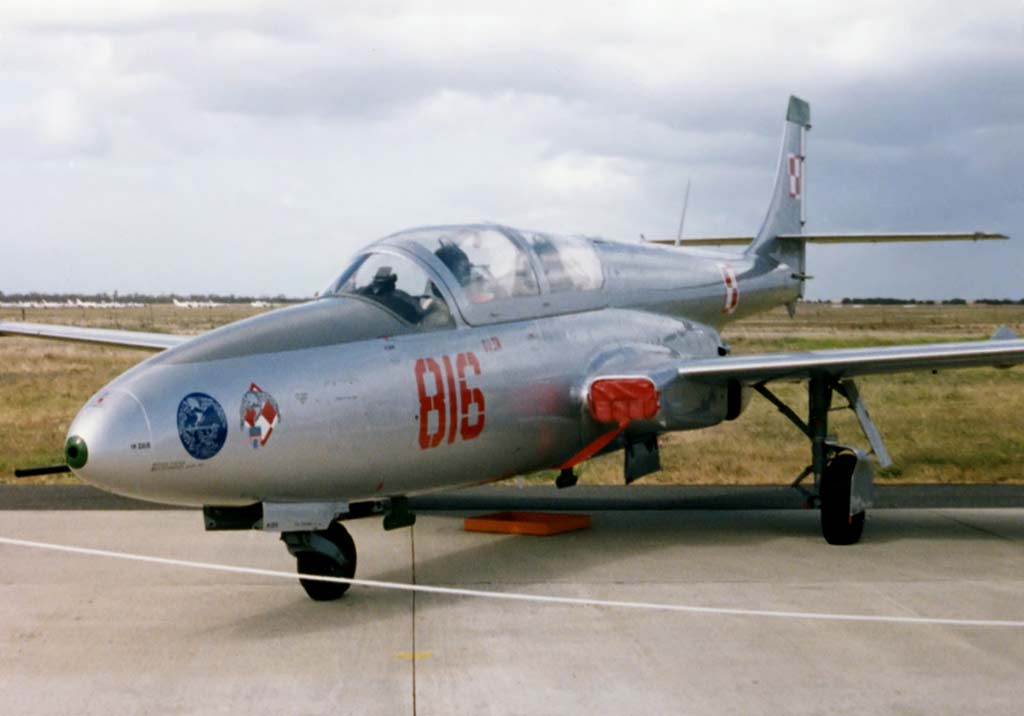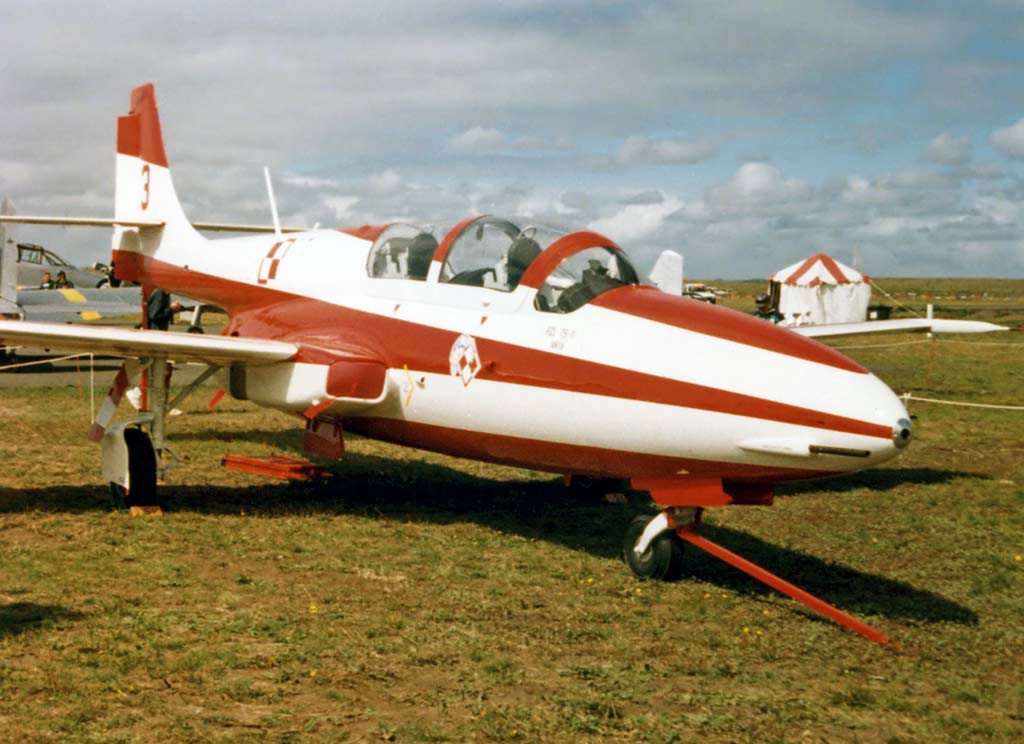The PZL TS-11 Iskra is Poland’s first indigenous jet trainer aircraft, also used for light attack missions, recognized for its durability and versatility.
In brief
The PZL TS-11 Iskra, a Polish jet trainer and light attack aircraft, debuted in 1960. Designed by the PZL Warsaw team, it features a single turbojet engine, straight wings, and a T-tail, primarily serving in the Polish Air Force and exported to several countries. The Iskra was Poland’s step into the jet age, fulfilling roles from training to combat support, equipped with basic armaments and capable of various aerodynamic maneuvers. Its simplicity, reliability, and operational flexibility made it a valuable asset for pilot training and secondary combat roles, despite being overshadowed by more advanced jets in its later service years.

The PZL TS-11 Iskra holds a distinguished place in aviation history as Poland’s first turbojet-powered aircraft, marking a significant milestone in the country’s aerospace industry.
History of the Development of the PZL TS-11 Iskra
The development of the PZL TS-11 Iskra was initiated in the late 1950s by Poland’s leading aerospace manufacturer, PZL Warszawa-Okęcie. The primary goal was to create a jet-propelled aircraft to replace the piston-engined trainers then in service with the Polish Air Force. The Iskra was designed to meet the diverse needs of military aviation, offering capabilities for both advanced pilot training and light combat operations.
The program officially commenced in 1957, with the chief designer Tadeusz Sołtyk leading the project. The intent was to produce an all-Polish jet that could perform well above the existing training aircraft, providing a platform that could bridge the gap between initial training stages and the operation of front-line jet fighters. The first prototype took to the skies on February 5, 1960, marking a successful beginning to the aircraft’s flight testing phase.
The TS-11 Iskra was a significant development in the context of the Cold War era, where technological advancement in military aviation was crucial. Poland, then under communist rule and part of the Warsaw Pact, sought to bolster its defense capabilities with modern equipment, including indigenously produced jet aircraft. The Iskra’s introduction was a testament to Poland’s growing aerospace proficiency and its commitment to self-reliance in defense manufacturing.
The aircraft did not receive a specific NATO nickname, as it was primarily operated by Warsaw Pact nations. Its development was driven by the need for an effective training platform that could also undertake secondary combat roles, thereby maximizing the utility and operational flexibility of the air force’s inventory.
Design of the PZL TS-11 Iskra
The PZL TS-11 Iskra was innovatively designed with a focus on simplicity, efficiency, and versatility. Its airframe features a conventional monoplane layout with a straight wing design, which, while not offering the high-speed performance of swept-wing designs, provides excellent stability and handling characteristics, ideal for training purposes. The aircraft is powered by a single SO-3 turbojet engine, producing thrust that grants it respectable performance for a trainer of its era.
Equipped with a T-tail configuration, the Iskra has good control and stability at various speeds, an essential feature for training pilots transitioning to jet aircraft. Its construction predominantly uses metal, with durability and ease of maintenance in mind. The cockpit is designed for a crew of two, seated in tandem, with the student pilot in the front and the instructor in the rear, both under a large, clear canopy that offers excellent visibility.
The advantages of the TS-11’s design include its robustness, ease of maintenance, and forgiving flight characteristics. However, its straightforward design also meant limited growth potential, particularly in terms of speed and avionics sophistication, when compared to contemporaneous and subsequent jet trainers.
The Iskra’s adaptability was reflected in its ability to carry a range of armaments and equipment, allowing it to fulfill light attack and reconnaissance roles, demonstrating the aircraft’s multifaceted operational capability beyond just pilot training.
Performance of the PZL TS-11 Iskra
The PZL TS-11 Iskra, powered by the WSK SO-3 turbojet engine, delivering around 1,960 pounds of thrust, showcases commendable performance for a trainer aircraft. Its maximum speed tops at approximately 720 km/h (447 mph), with a service ceiling of around 11,000 meters (36,000 feet). The aircraft possesses a range of about 1,000 kilometers (621 miles), adequate for extensive training missions and short-range operational tasks.
While not designed for supersonic speeds or high-altitude interception missions, the Iskra’s performance is well-tailored to its training and secondary combat roles. Its handling characteristics are notably forgiving, providing an ideal platform for pilots transitioning from propeller-driven to jet-powered aircraft. Compared to other contemporary trainers like the Cessna T-37 Tweet or the BAE Systems Hawk, the Iskra holds its ground in terms of reliability and operational cost-effectiveness, though it lacks the advanced avionics and higher performance capabilities of its Western counterparts.
The aircraft’s design allows for a variety of underwing stores, enabling basic combat training missions, including air-to-ground and simple air-to-air engagements. Its operational ceiling and speed support effective training for higher performance jet fighters, ensuring pilots are well-prepared for transitioning to front-line aircraft.
Variants of the PZL TS-11 Iskra
The PZL TS-11 Iskra was produced in several variants, each tailored for specific training or operational roles:
- TS-11 Iskra bis A: This is the initial production variant designed primarily for advanced pilot training, with provisions for underwing armaments.
- TS-11 Iskra bis B: A variant equipped for both training and light ground-attack roles, featuring hardpoints for weapons and external fuel tanks.
- TS-11 Iskra bis C: Configured mainly for reconnaissance missions, equipped with cameras and specialized avionics.
- TS-11 Iskra bis D: An improved version with enhanced avionics and the capability to train pilots for all-weather operations.
- TS-11 Iskra 200: A proposed export version with upgraded avionics and engine, though it saw limited production.
Each variant maintained the core design philosophy of the Iskra, emphasizing versatility and adaptability to various training and light combat roles.

Military Use and Combat of the PZL TS-11 Iskra
The PZL TS-11 Iskra primarily served in the Polish Air Force, with significant numbers also operated by the Indian Air Force. Its role was predominantly for advanced jet pilot training, preparing crews for transition to more sophisticated fighters. The aircraft’s reliability and straightforward design made it an ideal platform for instructional purposes, contributing significantly to the training of several generations of pilots.
In Poland, the Iskra also undertook border patrol and reconnaissance duties, capitalizing on its adaptability to various mission profiles. Although not primarily designed for combat, its capability to carry armaments meant it could be deployed for light attack missions if required. However, there are no well-documented instances of the Iskra being used in actual combat situations, as its operational use was mostly confined to peacetime training and surveillance tasks.
Internationally, besides its service with Poland and India, the Iskra was evaluated by several other countries, though it did not achieve widespread export success. The aircraft’s operational history is marked by its enduring presence in military training, with the Polish Air Force only phasing out the last units in the early 21st century, underlining the aircraft’s long service life and the high regard in which it was held.
The PZL TS-11 Iskra stands out in aviation history as a robust, reliable, and versatile trainer aircraft, significant for being Poland’s first indigenously designed and produced jet aircraft. Its legacy is characterized by its extended service life, substantial contribution to pilot training programs, and its role in advancing Poland’s aerospace industry. While technologically surpassed by newer training aircraft over time, the Iskra’s design efficiency, operational flexibility, and historical importance remain noteworthy. Its enduring service is a testament to the effective fulfillment of its intended roles, combining training efficacy with operational simplicity.
Back to the Trainers section.